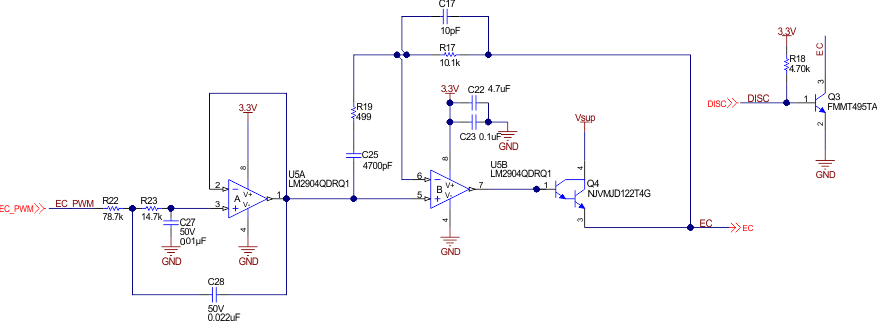TIDUES6 August 2020 – MONTH
- Description
- Resources
- Features
- Applications
- 5
- 1System Description
- 2System Overview
- 3Hardware, Software, Testing Requirements, and Test Results
- 4Design Files
- 5Software Files
- 6Related Documentation
- 7Terminology
2.4.4 Electrochromic Mirror Driver
The electrochromic (EC) mirror utilizes a proprietary electrochromic chemical placed between two conductive layers and glass panels. When a voltage is applied to these conductive elements, the current flow through the chemical causes it to change in color and darken. Electrically, the electrochromic mirror behaves like a very large capacitor, typically greater than 1 F, as well as a small shunt resistance. The total capacitance measured largely depends on the total area of the mirror.
Figure 2-10 shows the EC mirror driver schematic.
 Figure 2-10 Electrochromic Mirror Driver Circuit
Figure 2-10 Electrochromic Mirror Driver Circuit